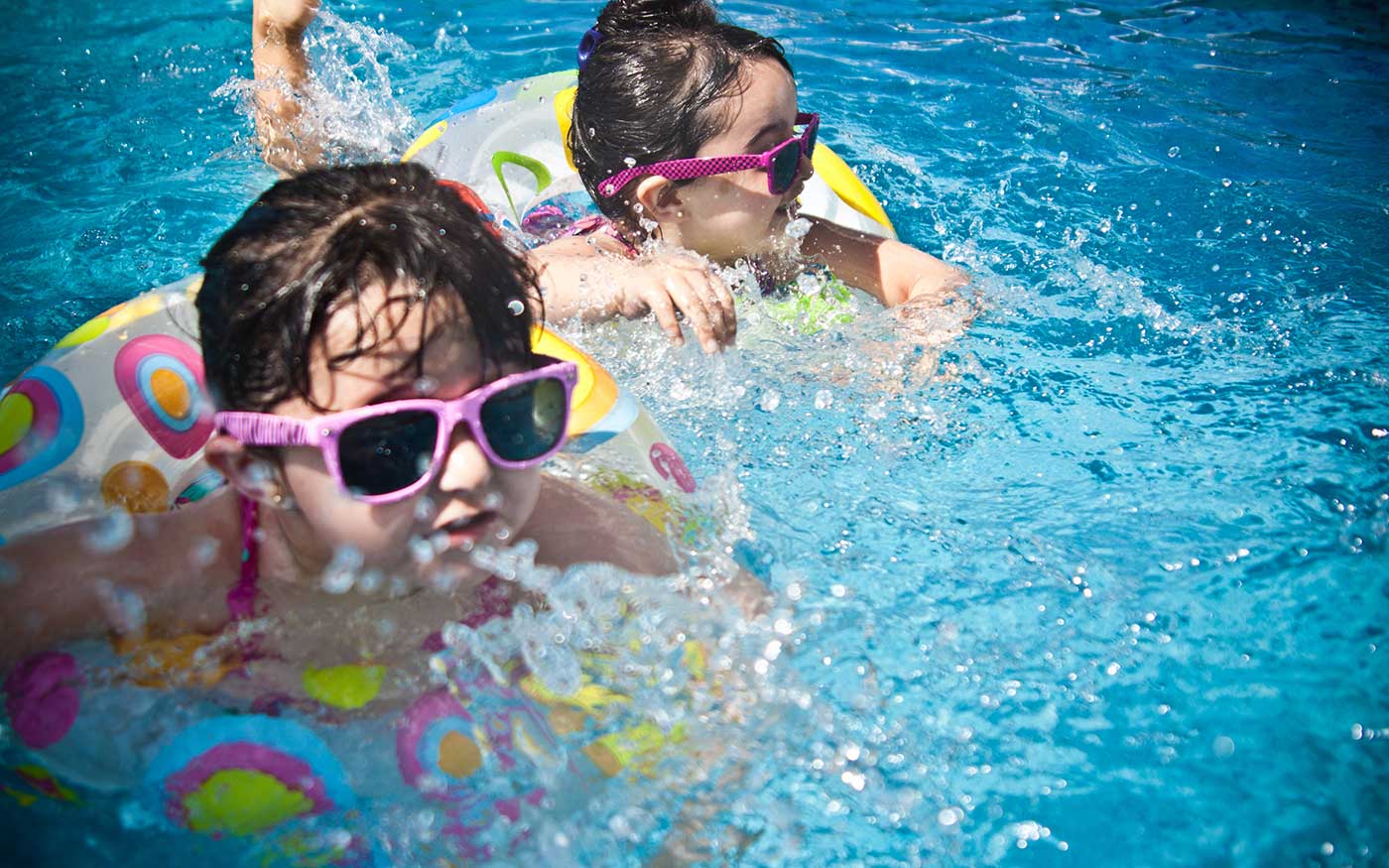Some people might think that owning a pool or hot tub undermines efforts to conserve water. In times of drought, myths about swimming pools circulate to draw focus away from issues that have to do with the actual uses of water. This has, on occasion, resulted in unfair restrictions being placed on the construction and filling of swimming pools and home spas. Water is a precious commodity, and we are very aware that care must be taken to protect this precious natural resource. Knowledge and facts must replace the myths and emotions that have governed water politics in the past.
Swimming pools use less water than a well-maintained lawn.
According to an analysis of water use in swimming pools that was based on studies prepared by the City of Sacramento for use by the California SPEC (California Spa & Pool Industry Energy, Codes and Legislative Council), a swimming pool uses substantially less water than comparable landscaped and planted areas such as lawns. The study concluded that lawn irrigation use equals 49 inches per year and that swimming pool requirements are 39.6 inches per year, less walkway and decking areas equal to the actual pool area, which reduces total pool water use to 20 inches per year.
The use of water in swimming pools and spas is negligible compared to any water district’s annual water consumption.
An additional California SPEC research project in the Santa Clara Valley district showed that if 800 pools were built in a typical year and each was filled with 20,000 gallons of water, the 16 million gallons needed for the initial filling of those pools would only comprise 4.5% of one day’s average water use. This means that all the water needed to fill all the new pools in the area would equal just one hour of typical public water use for this water district.
The municipal water supply is not the only source that can be used to “top off” a residential pool.
Pools covered with mesh safety covers have accumulated enough water from rain, snow and ice to be opened without additional municipal water. The water collected on top of solid pool covers can be filtered and placed in the pool. Additionally, the home’s downspouts can be extended to the edge of the pool to enable rainwater to augment water already in the pool.
A pool owner can serve their local fire department in times of drought.
In addition to their pools acting as a reservoir, pool owners can also help serve their community. We provide a sample Pool Owner’s Fire Protection Agreement, which can be used to allow access to your local fire department so that they may pump water from your pool in the event of a fire in your neighborhood. This agreement is an incentive for officials to see pools as a benefit in times of drought.
What is needed instead is a more rational approach to the allocation of water. Conservation measures, such as the use of covers in reducing water evaporation, and water-saving measures, such as less-frequent backwashing, show that pools and spas can serve as reservoirs and emergency containers of water—rather than being the targets of water-use restrictions.
Furthermore, studies have demonstrated the pool and hot tub industry’s economic role in a local community. The taxes paid by these businesses and wage earners would be affected by a water-use ban — or even the mere discussion of filling restrictions. If potential pool buyers wonder whether their pool can get filled, they might change their plans — and such changes will hurt the construction industry, thereby affecting the community.

